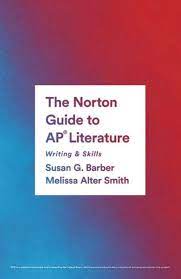In the two weeks leading up to the AP Literature and Composition exam, it is easy to panic. What do you review from the past 180 days? There are so many units, so many enduring understandings, so many skills. What little tricks can help your students make the jump from a 3 to a 4, or a 4 to a 5?
The truth is, you can’t really cram for the exam in the days leading up to test day. It is not a memorization test, or a formula test. It is a test that rewards the accumulation of skill over time. It bestows grace upon students that can read, write, and analyze well — hence the AP Reading mantra, “reward students for what they do well.”
This does not mean we let students go at it alone. We can reinforce and bolster what students already know. We can give them five simple things that will lead to exam-day success without freaking them out. And isn’t that our job, to give them confidence without causing panic?
Here are five ways to bestow confidence in the weeks leading up to the exam.
Know Three Works Really Well
As an exercise, I’ve challenged my students to pick one work they know really well and see how many Q3 prompts they can apply it to over the past 20 years. Typically it is about 75-80%, sometimes it goes as high as 95%. Occasionally a work has to be shoe-horned into a prompt, but most of the time it slides in easily. The point is, you don’t need to know 7-8 works well to succeed on Q3 of exam, you just need three.
My students have always performed the best on Q3 — the literary argument prompt– than the other two questions and I believe my Six Scenes to Themes is the reason why. We review these documents, which were compiled earlier in the year in order to prepare for Q3.
Six Scenes to Themes is as obvious as its name. It takes the six most important scenes from a novel and provides a detailed understanding of each moment, with a strong connection to the novel’s themes.
If students review this for three works, they will know 18 important scenes from novels and will be able to connect each of them “to the meaning of the work as a whole.”
Here’s a sample:
Utilize the Core Five Literary Elements
There used to be lists that would circulate in the AP community of all the literary and poetic elements that have appeared on the exam. Of its 100+ terms, it had some of the major ones, but there were also esoteric terms like zeugma. For students to write strong essays, it helps if they know a bunch of literary terms, but the truth is, it is not essential.
There are five techniques that are almost guaranteed to appear on Q1 and Q2. If students can mater their understanding of these five devices, they can approach these questions on the exam from a place of confidence, rather than fear.
There are dozens more diagrams like this in our AP Literature Teacher Toolkit.
Add a Conjunction to Their Thesis Statement
What does a conjunction do?
It adds a layer to a thought.
In the weeks leading up to the exam, teach your students to add a conjunction to their thesis statement, and you will really be teaching them how to add a layer of complexity to their analysis.
Here’s a sample prompt I used in my class:
Chapter 26 of How to Read Literature Like a Professor questions, “Is He Serious? And Other Ironies.” Using Foster’s text as a guide, analyze the use of irony in 1984 and connect its purpose to the meaning of the work as a whole.
A Sample Weak Thesis
Here is a formulaic, superficial thesis that our students need to avoid.
In George Orwell’s futuristic novel, 1984, irony plays a major part and affects many of the novel’s plot twists, contributing to the development of the story and the meaning of the work as a whole.
Let’s poke some holes for a second. There are two glaring weakness with this thesis statement:
1. It basically repeats the prompt, hiding the true voice of the writer.
2. There no insight, and perhaps worse, there is no demonstration that this writer has read 1984.
A Stronger Thesis
In the novel 1984, Winston feels the incongruity between appearance and reality in this supposed utopia, but as he crusades against the psychological manipulations of the party he ultimately is doomed to conform to its power.
Check out my post How to Craft a Killer Thesis Statement for more on this.
What has Changed?
In the 2023 Chief Reader Report, written by Steve Price, he encourages students to ask simple questions of a text:
As a student makes claims, encourage other students to ask them questions like “So
What?” and “Why?” Also encourage students to ask about relationships between ideas (“That’s
interesting that the islanders eventually accepted the group who returned home. What changed? Why
do both groups now trust one another?”).
These simple questions — especially “what changed?” — can help students navigate difficult and intimidating texts. It builds confidence because once students can answer this question, they can start building more nuanced and sophisticated layers of meaning on top of it.
Look for the Distractors
Here is how multiple-choice questions operate on the exam. Every question has only one answer that is 100% correct. The three other choices all have something wrong with them. Often, it is as small as one word that makes a choice incorrect, even though everything else in it is right. Students need to be aware of these good distractions. So often, a student’s eye gravitates toward the thing that looks plausible and they go with it without having investigated the whole answer. THIS IS THE DISTRACTOR.
If your students can do these five things in the days and weeks leading up to the exam, they can approach the test from a place of confidence rather than fear.
For a few more tips, check out 8 Things to Know for the AP Lit. Exam.












